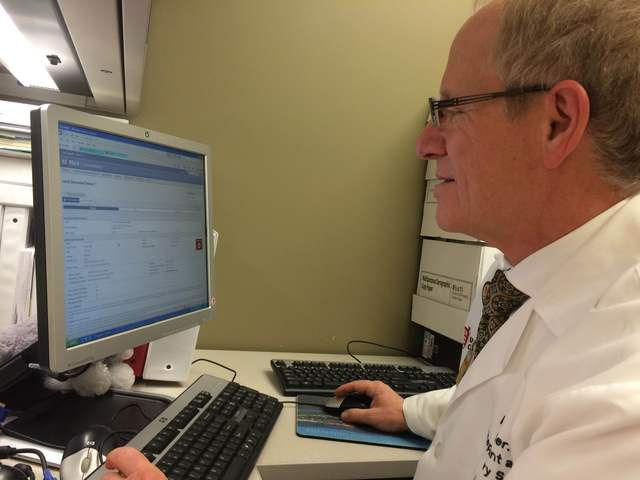Who’s Next in Line for a Kidney Transplant? Local Surgeon Helps Change the Rules / ideastream –
- TFAdmin

- Dec 30, 2014
- 3 min read
Monday, December 22, 2014 at 5:30 AM
More than 100,000 people in the U.S. are waiting for a kidney transplant – that’s a longer waiting list than for any other organ. Each year, only about one-sixth of those patients will get one. The rules governing who’s next in line have just gotten an overhaul. As ideastream’s Joanna Richards reports, a Cleveland-area surgeon played a key role in trying to make the system fairer.

Matching patients with donor organs is a complex process, with medical, ethical and practical considerations.
But there are still often many potential matches for each available kidney. So how to decide who gets it?
“We of course prioritize prior living donors, we prioritize pediatric patients,” said Mark Aeder, a transplant surgeon at University Hospitals Case Medical Center. He’s also vice-chair of the Kidney Transplantation Committee at UNOS, the United Network for Organ Sharing, which oversees transplants in the U.S.
His committee worked for years to come up with a better way to allocate kidneys to needy patients. The changes took effect December 4th.
Aeder said kids and previous organ donors are still high-priority on the waiting list. And he said most patients won’t see much change in wait time. But for some, the new rules will make a dramatic difference.
“Can you give me a big ‘choo-choo’?” shouted Mike Brown, amid the chatter of shoppers at Tower City Center, in downtown Cleveland.
A woman and her young daughter shouted back: “Choo-choo!” The train started its loop around the atrium, passing a talking Christmas tree and waving children.
Brown, wearing a candy-cane striped tie and red suspenders, was its conductor. He works for Kringle’s Inventionasium, a kids’ holiday attraction. Brown also has a seasonal job with the Indians, is in college full-time, and he loves to act. He has to fit all of that around what amounts to another part-time job: dialysis.
“Okay celebrity Mike, come on,” a nurse greeted Brown at the Centers for Dialysis Care facility in Euclid.
Brown settled into an easy chair next to a boxy machine he relies on to do the work his kidneys don’t. He looked away as a nurse inserted two needles into his forearm – one to take the blood out, one to bring it back in. In between, the machine cleaned it of waste and removed excess fluid.
“This is where I will sit for the next four and a half hours,” he explained.
Brown, who’s 31, has been going for dialysis three times a week for nearly 12 years. Afterward, he’s drained and can’t do much. It limits his activities, especially travel.
“You have to plan an entire day around doing this,” he said.
But earlier this month, because of the policy changes made by Mark Aeder and his colleagues at UNOS, Brown moved years ahead on the transplant waiting list.
Many variables determine a patient’s place in line, but in large part, it’s first come, first served. Brown could have gotten listed years ago when his kidneys failed, but he says surgery scared him. Three years ago, a new doctor insisted he consider it: he’d live better and longer with a transplant.
He got in line. Under the old rules, he still had a few more years to wait.
Patients with earlier and better medical care often get listed sooner, surgeon Aeder said.
“We find that not everybody had the same opportunity for listing at an equivalent time.”
To help level the playing field, UNOS is now giving patients like Mike Brown waiting time credit back to when they started dialysis. As a result, Aeder said Brown is likely to get a new kidney within the next six months.
The new rules also prioritize biologically hard-to-match patients, so they aren’t overlooked when a compatible organ is available.
Along with making the system more equitable, Aeder said the changes also maximum use of a scarce resource – by better matching patients and organs based on their likely longevity.
“We modeled well over 50 different allocation schemes…and this system seemed to provide the most additional life years of any of the other algorithms,” he said.
Just a week after the changes kicked in, Mike Brown got his first phone call about a potential kidney match.
“I was excited, I was almost in tears,” he said. He was one of a handful of patients put on standby.
“You know, I have to think about, ‘God, what would it be like, not to have to do this every other day of my life?’” he wondered.
Brown ended up losing out to someone higher on the waiting list. But he knows it’s a good sign. It’ll be his turn soon.






Comments